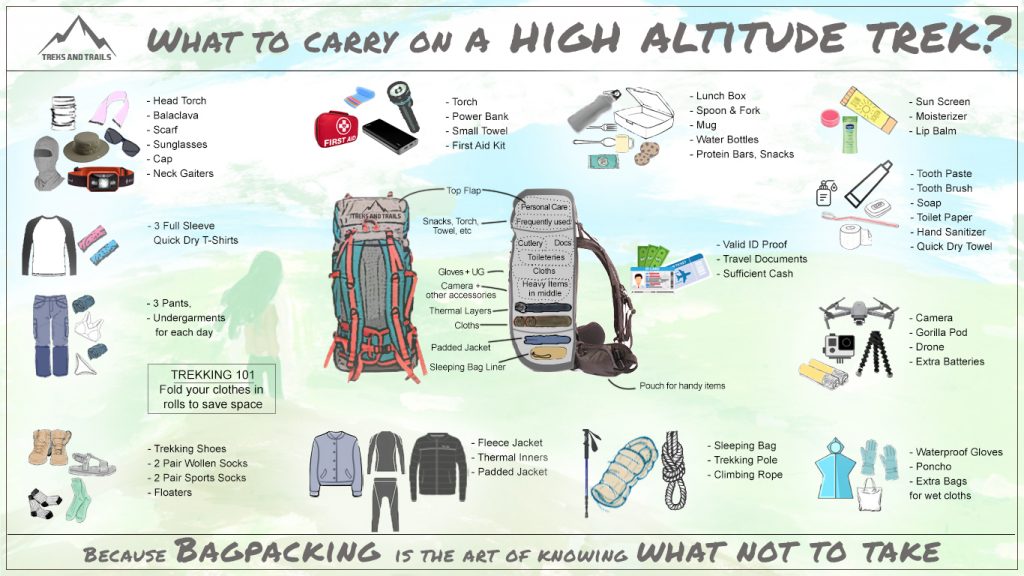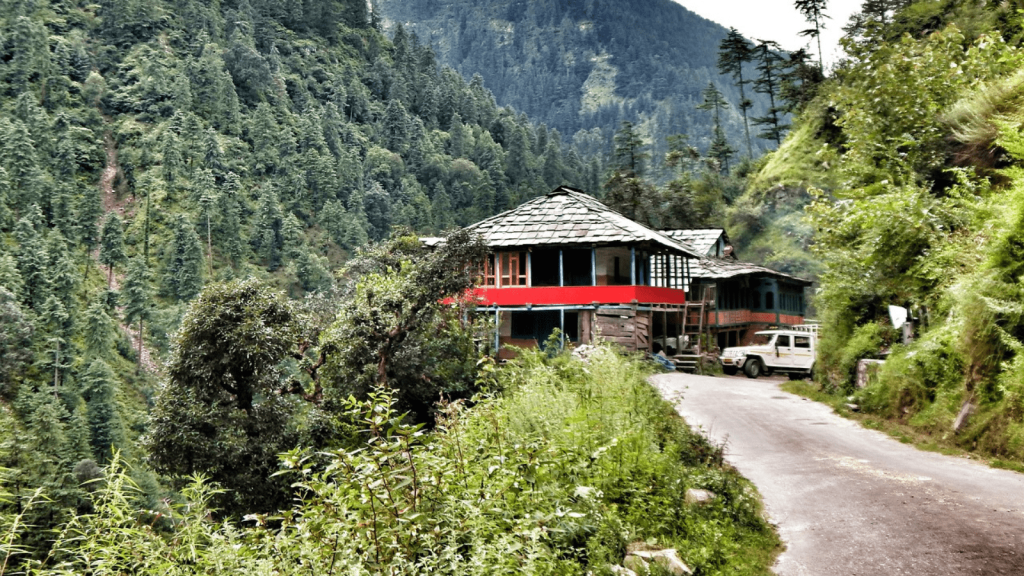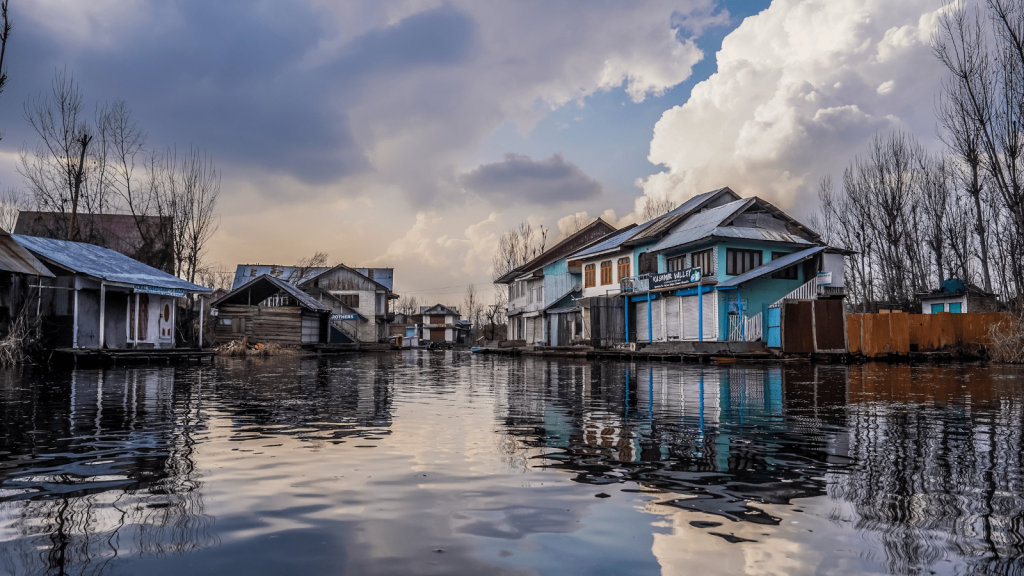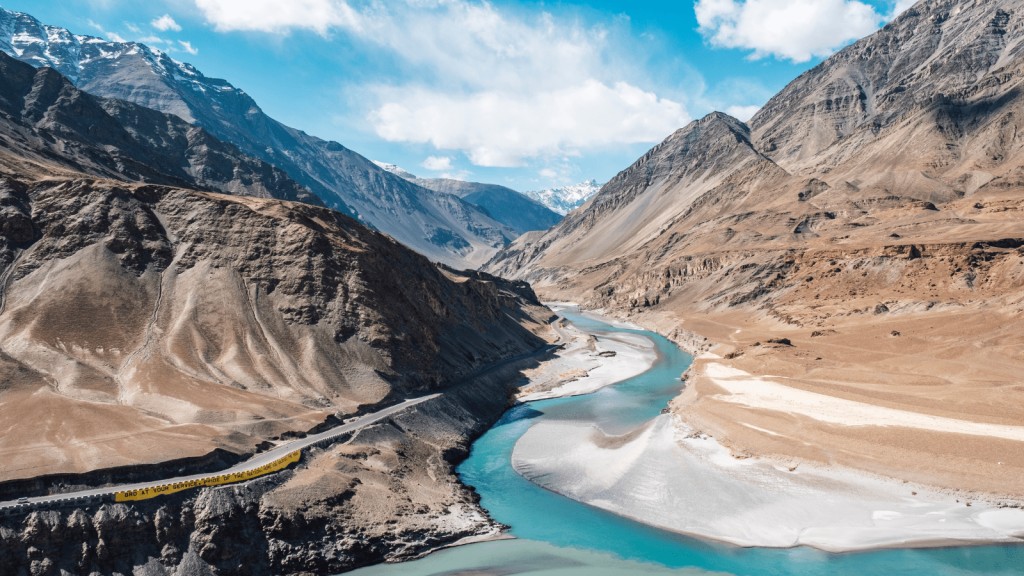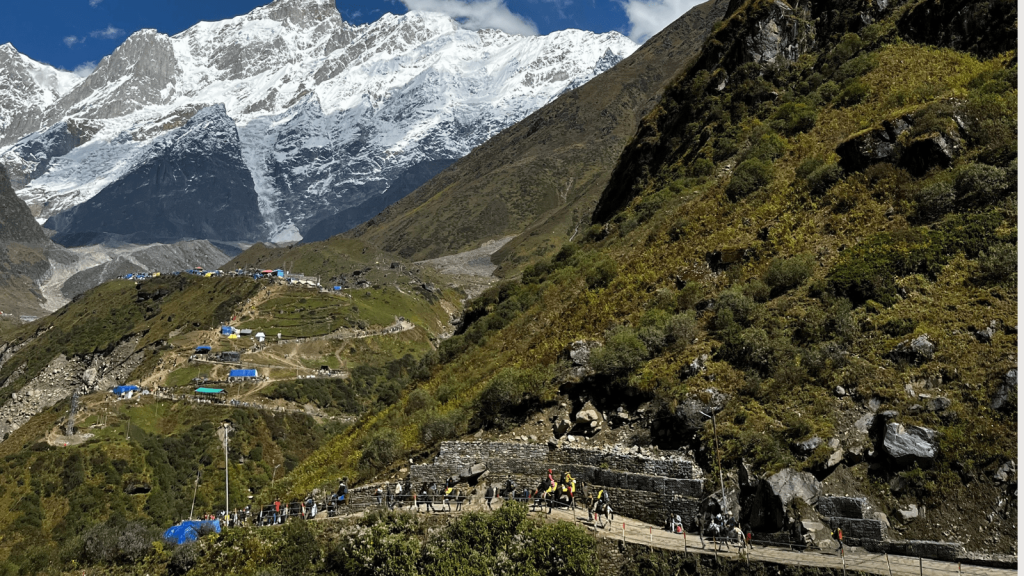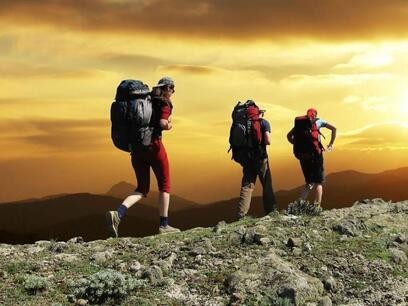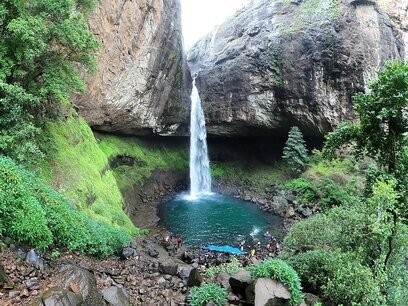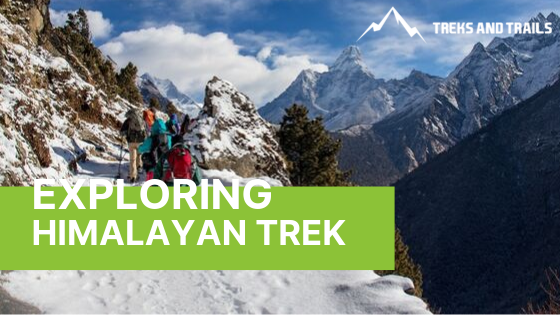
How to pack your backpack
Packing a backpack or a rucksack is indeed one of the most important aspects of a trek. A well-packed bag ensures easy access and maximal comfort for accessing items that you are going to use frequently. In an ideal world, all the gear you carry has to be lightweight. But, the equipment that is even ultra-lightweight adds up later – exceptionally long treks that you take on the Himalayas.
Treks on the Himalaya’s different parts stretch from being medium to short and extended long durations. Backpacking for shorter treks is a lot easier than those that involve long or medium duration treks. The higher the trek’s duration, the higher will be its importance. A significant catch is packing light and carrying all the safety as well as necessary items. Moreover, you must be able to take it all with the utmost comfort because when on the mountains each gram matters.
The rucksack must weigh anywhere between twelve to eight kilograms
You should solely focus on packing all things inside a backpack while in no way compromising individual safety. Therefore, being a successful trekker, you must grow the habits of carrying comfortably. This act shall ensure that you are leaving fewer footprints on the mountain. In a challenging/hard/arduous trek, you must take a few critical items.
These include emergency items like dry food items, carry mattresses, sleeping bags, windproof gear, and the waterproof plus and warm jacket. It all starts with selecting a suitable rucksack as per the trek and trip. The backpack has to have enough space within, and a single bag must be within one to two kilograms.
Proper Clothes/Clothing
For a week-long trek, you must carry clothes wisely and adequately. You need three layers that are warm (two light layers like a padded jacket, woolen, and fleece). If there are winter treks, you have to carry five layers of warm clothes, at least. Carry trek pants with you, three-collared T-shirts and thermals.
Bare necessities
A backpack that is forty to sixty liters is a must. It must have sturdy straps and a frame that supports. You must have a rain cover for the essential backpack because that makes your packing game stronger. Another bare necessity that you cannot do without having to be your trekking shoes. You cannot carry just right enough sports shoes; instead, they have to be padded, cushioned, and comfy shoes which do not give you blisters.
Accessories
Be careful about what you are selecting and what you are discarding. The approach to packing has to be minimalistic. For instance, you can buy a small tube of toothpaste, chapstick, scissors, tissue roll, soap strips, torch, and a little cold cream container. You do not require a beautification or shaving kit. The combined weight of all these must not exceed five hundred grams. The list of other accessories includes the following.
Trekking pole
You need a trekking pole when you are packing for the hike because they keep you stable. Hikes may involve crossing the stream and anchor the way across slippery rocks; hence, a pole is indispensable and invaluable.
LED torch/headlamp
While most expert trekkers rely on the natural light of the moon when they go night hiking, but they must carry headlamps. Get the headlight which has a red light and fits your forehead comfortably.
Sleeping bag
For Himalayan treks, you need sleeping bags that can withstand a temperature between zero degrees and minus ten degrees. Down-filled/synthetic bags have to weigh around two kilograms and not more than that.
Medical Kit/ first-aid
An antiseptic crème, Dettol, cotton, and crepe bandage are a must. Also, It would be a wise move if you carry pain-relief sprays, pills to cater to stomach upset, pain killers, medicines for headaches, and vomiting. For emergency keep instant edible items of food, few candies, chocolate bars, energy bars, and a mix of dry fruits. It is best if you are carrying glucose. All of these, together must not exceed five hundred grams.
Sun caps
At greater heights, you have to face intense sun there an absolute essential is the sun cap. This cap will save you from sunburn.
Sunglasses
You need to carry the sunglasses because they prevent blindness from the snow.
Hand gloves/mittens
Carry two pairs of gloves. One pair must be the waterproof ones, and the other must be the woolen or fleece ones.
